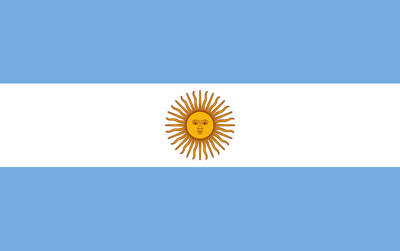Pakistan Local Cotton Market:
(The local cotton market faces significant challenges, including reduced arrivals, lower quality, and increased reliance on imports, with Pakistan likely to import 50 lac bales at a cost of $2 billion. The Aptma has urged the government to extend tax exemptions to local cotton to support the struggling textile sector. Meanwhile, global cotton markets remain subdued due to weak demand, limited shipments, and holiday trading slowdowns)
1- The local cotton market witnessed a noticeable slowdown in activity this week compared to the previous one, primarily due to a decline in cotton arrivals. The reduced availability, coupled with a drop in quality, dampened buyer interest and resulted in sluggish domestic purchasing. Most of the cotton stock currently held by ginners consists of lower-quality varieties, further impacting sales and leaving many ginners struggling.
2- Additionally, a significant number of buyers have turned to imported cotton, drawn by its better quality and more competitive pricing. This shift underscores the growing dependence on imports to fulfill market needs when local production falls short in both quantity and quality.
3- Decline in New York cotton prices prompts mills to immediately enter into import contracts Nonetheless, approximately 36 lac bales of import contracts have already been finalized, with additional contracts being made periodically. Sources suggest that Pakistan may need to import around 50 lac bales of cotton this year, incurring a cost of approximately $2 billion. Meanwhile, spinners are facing an exemption on sales tax (EFS) for imported cotton and cotton yarn, while local cotton is subject to an 18% sales tax.
4- The Aptma has requested the government to extend the EFS facility to local cotton, as well. Due to the low local cotton production, the season is expected to be over soon.
5- State Bank of Pakistan (SBP) reduced the interest rate by 2% on December 16th. This reduction is anticipated to benefit businesses, industries, and especially the textile sector.
6- ICE cotton closed lower in this week after initial gains due to a weaker dollar index and short covering. Trading activities were thin ahead of the Christmas holidays. The market is expected to see limited trading and shipping activities in the coming sessions. Market activity is expected to remain subdued during the Christmas week, after Christmas, and into January. The lack of shipments is a key factor adding pressure to the cotton market.
7- The market’s 11-session trend and pre-holiday light trading suggest continued weakness unless significant demand or shipment activity emerges. The 2024 U.S. crop was increased slightly due to a slight increase in expected U.S. average yield.
8- Exports for the 2023 crop marketing year are projected at 11.3 million bales – unchanged from the November estimate. World Use/demand was raised 570,000 bales from the November projection. Use was lowered 500,000 bales for China but showed notable increases for India, Pakistan, and Vietnam. With the drop in projected Use, imports were also lowered 500,000 bales for China. Exports were raised 200,000 bales for Brazil. Brazil is now the world’s leading exporter, surpassing the U.S.
9- The PCGA’s December 15 report shows a 33.11% year-on-year drop in cotton arrivals, totaling 5.367 million bales this season compared to 8.023 million last year. Punjab saw a sharper decline (33.44%) than Sindh (31.8%), with Sindh surpassing Punjab in output at 2.773 million bales versus 2.593 million. Recent fortnightly arrivals fell 34.6% from last year.
Local Yarn Market:
(The local yarn market remained stable with minimal business activity, particularly for coarse counts. Suppliers faced challenges managing inventory and securing necessary funds. Despite stable PSF prices, the overall market outlook remains cautious, with the upcoming year-end impacting business operations)
1- The local yarn market continued to be stable with minimal business activity. Sales of coarse counts were under significant pressure
2- Suppliers need funds to manage the inventory due to December closings
3- PSF prices remained stable this week and are expected to continue stable by next week.
4- The Faisalabad yarn market exhibited a stable trend, with steady demand for fine cotton and polyester-viscose (PV) yarns
| Count | Price in Pak Rupees / 10 LBS | Price US$/Bale |
| 16/1 Carded Weaving | 3250 – 3325 | 470 – 480 |
| 20/1 Carded Weaving | 3320 – 3425 | 480 – 495 |
| 30/1 Carded Weaving | 3650 – 3800 | 525 – 550 |
| 20/1 Combed Weaving | 3800 – 3925 | 550 – 565 |
| 30/1 PC Carded Weaving 52:48 | 3050 – 3200 | 440 – 460 |
| 40/1 Combed Compact Weaving | 4350 – 4450 | 630 – 645 |
| 60/1 Combed Compact Weaving | 5900 – 6150 | 855 – 890 |
| 80/1 Combed Compact Weaving | 8000 – 8200 | 1155 – 1185 |
Export Yarn Market:
(The export yarn market remained under average business tone. Customers from all regions floated handsome numbers of inquiries, & orders confirmation quantum was decent too)
1- The export yarn market remained firm and normal with slow business activity ahead of Christmas and New Year holidays.
2- Customer floated decent numbers of inquiries against which order materialization was minimal.
3- Suppliers remained firm in asking their price due to high costs of production and good sales positions.
4- The Pakistani rupee against the USD is showing stable sentiment, which is another reason for unchanged yarn prices for the export market.
5- The Pakistan cotton crop is at its end, and prices will remain in the same range in the days to come.
6- Chinese buyers kept on buying cautiously due to the weak RMB against the USD. We might see another buying spree from Chinese customers in January before their New Year holidays.
7- European buyers were actively inquiring about the upcoming requirements, and handsome numbers of orders were placed as well.
| Export Yarn Prices | ||||||||||||||||
|
Local Fabric Market:
(The local fabric market tracing activity remained slow. The local finishers showed their interest; however, business materialization was less due to low target prices. In the coming weeks, we anticipate a slow trend for both narrow and wider-width looms. whereas prices are expected to remain firm)
1- During the current week under review, the local fabric market experienced slow trading activity for both narrow and wider-width fabrics.
2- Although local finishers showed increased interest with a higher number of inquiries, actual orders materialized, remaining limited at last week’s price levels after tough negotiations.
3- Buyers proposed bids 6-8% lower than the offered prices, resulting in limited trading activity by the week’s end.
4- Local brands stayed on the sidelines as they focused on their summer collections. Currently, weavers are booked for narrow-width looms until the end of January/early February and have also secured orders for wider-width looms until the end of February, with deliveries being offered beyond these dates.
5- In the coming weeks, we anticipate a slow trend for both narrow and wider-width looms, whereas prices are expected to remain firm.
Export Fabric Market:
(Comparatively slow business activity was seen in the export fabric market for the Far Eastern, EU, and USA markets. The prices are stable due to stable raw material prices. Suppliers are expecting slow business for the next couple of weeks due to holiday season)
1- The export fabric market remained slow and dull during the week with limited business activity.
2- Customers have exchanged a lower number of inquiries, resulting in a lower number of orders.
3- Asking prices were stable due to stable raw material prices. It’s been a couple of weeks that the prices are constantly stable.
4- Suppliers are booked till the end of Jan and offering early to mid-Feb onward deliveries.
5- European and USA buyers were asked about buying due to holiday mood.
6- Wider-width suppliers are booked for the next 2–3 months due to good orders of wider width in export, as well as they are running two panels for local suiting brands; thus they are offering end-March onward deliveries.
7- Prices for wider widths remained stable as of the last couple of weeks.
| Local and Export Fabric Prices
| ||||||||||||
|
Bed Linen and Towel:
(Slow business activity was seen in the home textile sector due to the holiday season. It is expected that customers will start placing orders after the Heimtex fair)
1- Business activity has been notably low due to the holiday season in West, due to upcoming Christmas holidays.
2- Most of the buyers are currently on holiday, resulting in minimal business activity with regard to inquiries and order confirmations.
3- It is expected that customer may started placing orders after the Heimtex event.
Garments:
(Overall, garment factories are operating at seventy to eighty percent of their production capacities and striving to grab more orders to fulfill their empty space. For that, factories are also ready to squeeze their margins to clinch the orders. Some brands are also working on FW25/SS26 developments which show a healthy sign for future order with specific quantities)
1- The Pakistani apparel industry is suffering unequal commercial activity, with manufacturers not obtaining enough orders to meet their manufacturing capacity.
2- Because of inflation, some retailers and brands have reduced their purchasing.
3- Large retailers typically placed orders based on projections, but market sentiment has slowed in the fourth quarter of 2024 due to global inflation.
4- Factories plan to supply onwards orders by the End of March 2025.
5- Sustainability is vital in the apparel industry to reduce environmental impact and improve working conditions.
6- The global denim market is struggling with inflation, but manufacturers remain optimistic about the forthcoming seasons as consumers continue to have a strong demand.
Crude Oil:
1- Crude oil prices opened at USD 70.71 with a higher level as compared to last week’s closing figures. In this week, crude oil prices showed a downward trend and closed on the lower side by the end of the week.
2- In the last day of the week, crude oil prices closed at USD 69.46 with a decrease of 1.25 USD cents as of the opening figure of the week.
| Opening of Week | Closing Of Week | Change | |
| Price | 70.71 | 69.46 | -1.25 |
Exchange Rate:
1- In the last week, the value of the Pakistani rupee appreciated against the US dollar; other major currencies showed mixed trends in both interbank and open markets.
2- At the end of the week, the euro closed on a positive note with a figure of 1.05, and the British pound also closed on a positive note with a figure of 1.25 against the USD.
| Selling | Buying | |
| LC Sight | 276.79 | 276.74 |
| LC 120 Days | 267.38 | 267.33 |
| Open Market | 281.08 | 275.47 |
New York Cotton Future:
The New York Cotton Futures (NYCF) opened the week lower than the previous week’s close, showing a mixed trend throughout and closed on a lower note at the end of the week.
1- March 2025 Ended at 68.06, down by 100 points compared to the previous week.
2- May 2025 Finished at 69.17, reflecting a decrease of 105 points from the previous week.
3- July 2025 Closed at 70.12, a drop of 115 points from the previous week.
4- October 2025 Closed at 68.74, marking a drop of 113 points from the previous week.
Liver Pool Indices:
1- Liverpool Index A was opened at 80.25 on the same level from the previous week of the closing figure.
2- In this week, Index “A” showed a downward trend and closed on the lower side by the end of the week.
3- On the last day of the week, LPI “A” closed at 78.35 with a decrease of 190 points.
| Opening of the Week | Closing of the Week | Change | |
| Index A | 80.25 | 78.35 | -1.90 |







